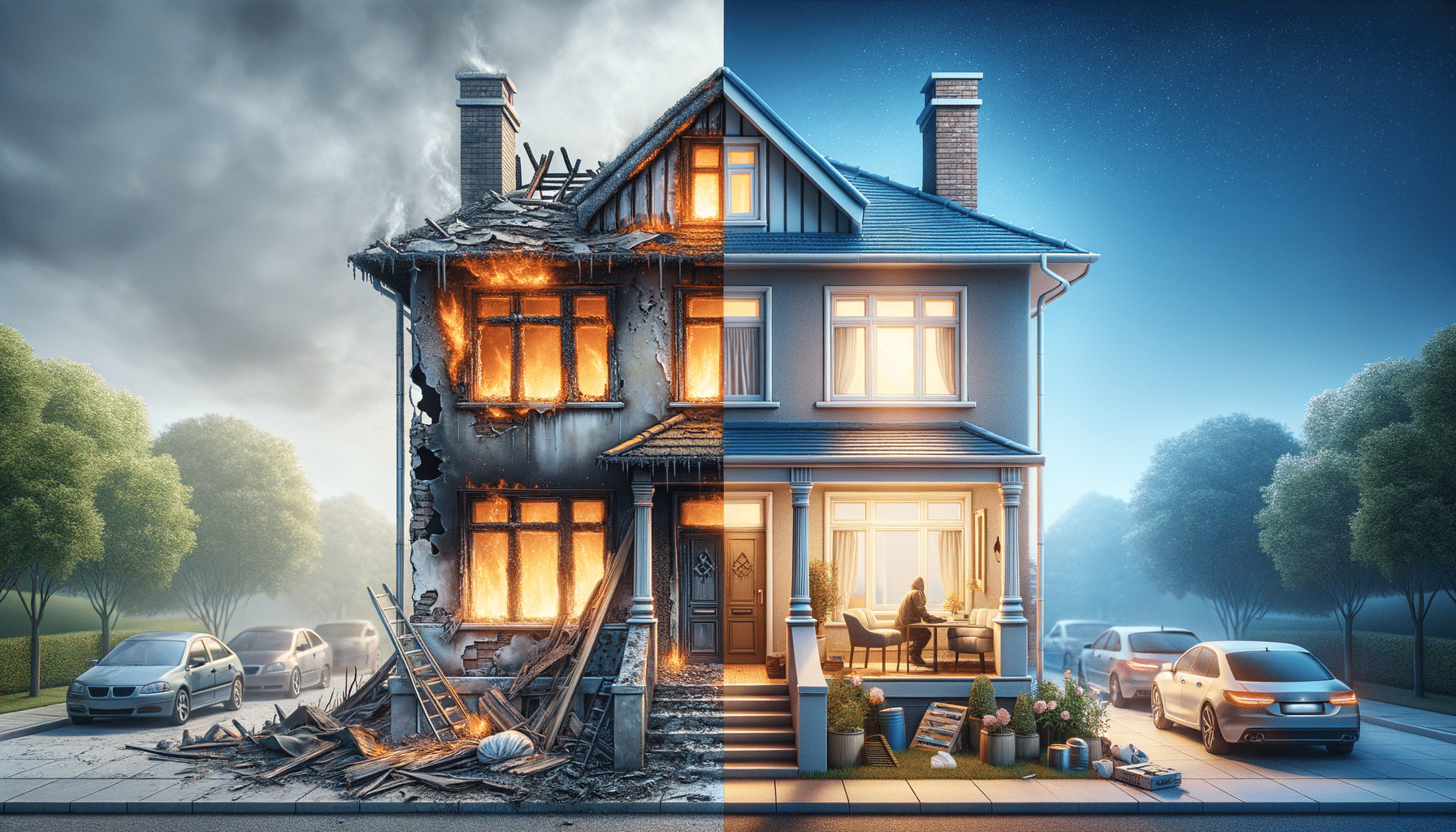
Understanding Fire Damage and Restoration Services
The Impact of Fire Damage
Fire damage is one of the most devastating events that can affect a home or business. The consequences of a fire extend far beyond the immediate destruction of property. It can lead to significant structural damage, rendering buildings unsafe for occupancy. The lingering effects of smoke and soot can also pose health risks, as they contain toxic chemicals that can infiltrate the air and surfaces within the affected area.
Moreover, fire damage can have a profound psychological impact on those affected. The loss of personal belongings and the disruption of daily life can lead to stress and anxiety. Understanding the full scope of fire damage is crucial for both emotional recovery and practical restoration efforts. It is essential to recognize that fire damage is not limited to what is visible to the naked eye; the hidden damages can be just as severe and require professional assessment and intervention.
Fire Damage Assessment and Safety
After a fire, a thorough assessment is essential to determine the extent of the damage and the necessary steps for restoration. This process involves evaluating the structural integrity of the building, identifying areas that are unsafe, and assessing the damage to the building’s contents. Safety is the top priority, as compromised structures can pose significant risks to occupants and restoration workers.
Professionals use specialized equipment to detect hidden damages, such as weakened support beams or compromised electrical systems. They also assess the presence of hazardous materials, like asbestos, which may have been disturbed during the fire. This comprehensive assessment ensures that all potential dangers are identified and addressed before the restoration process begins.
- Structural integrity evaluation
- Hazardous material identification
- Electrical system checks
By prioritizing safety and thorough assessment, restoration teams can develop a detailed plan to address all aspects of fire damage, ensuring a safe and effective recovery process.
Restoration Services: Cleanup and Repair
Once the assessment is complete, the cleanup and repair phase begins. This stage is crucial for restoring the property to its pre-fire condition. Cleanup involves removing debris, soot, and smoke residues, which are not only unsightly but also harmful to health. Specialized cleaning agents and equipment are used to ensure that all traces of smoke and soot are eliminated from surfaces and the air.
Repair efforts focus on restoring the structural elements of the building. This may involve replacing damaged walls, floors, and ceilings, as well as repairing or replacing electrical and plumbing systems. The goal is to return the building to a safe and functional state, while also addressing any cosmetic damages to restore its appearance.
- Debris and soot removal
- Structural repairs
- System replacements (electrical, plumbing)
Engaging professional restoration services ensures that all aspects of fire damage are addressed efficiently and effectively, minimizing the risk of future issues and facilitating a smooth recovery process.
Insurance and Financial Considerations
Dealing with fire damage often involves navigating complex insurance claims and financial considerations. Insurance policies vary, and understanding the coverage available is crucial for maximizing benefits and minimizing out-of-pocket expenses. It is important to document all damages thoroughly, as this documentation will be critical when filing an insurance claim.
Working with insurance adjusters and restoration professionals can help streamline the claims process. Professionals can provide detailed reports and estimates that align with insurance requirements, ensuring that all necessary repairs and restorations are covered. Additionally, some restoration companies offer assistance with the claims process, relieving property owners of some of the administrative burdens.
- Thorough damage documentation
- Collaboration with insurance adjusters
- Claims process assistance
Understanding insurance policies and seeking professional assistance can significantly ease the financial burden of fire damage, allowing property owners to focus on recovery and rebuilding.
Preventive Measures and Future Safety
While restoration is essential after a fire, taking preventive measures to reduce the risk of future incidents is equally important. Implementing fire safety strategies can protect property and lives, minimizing the likelihood of recurrence. Key preventive measures include installing smoke detectors, maintaining fire extinguishers, and conducting regular safety inspections.
Educating occupants about fire safety, such as creating evacuation plans and practicing fire drills, can also enhance preparedness and response in the event of a fire. Additionally, investing in fire-resistant materials during repairs or renovations can further safeguard the property.
- Smoke detector installation
- Fire extinguisher maintenance
- Safety inspections and drills
By prioritizing preventive measures and fostering a culture of safety, property owners can significantly reduce the risk of fire damage and ensure a safer environment for all occupants.


